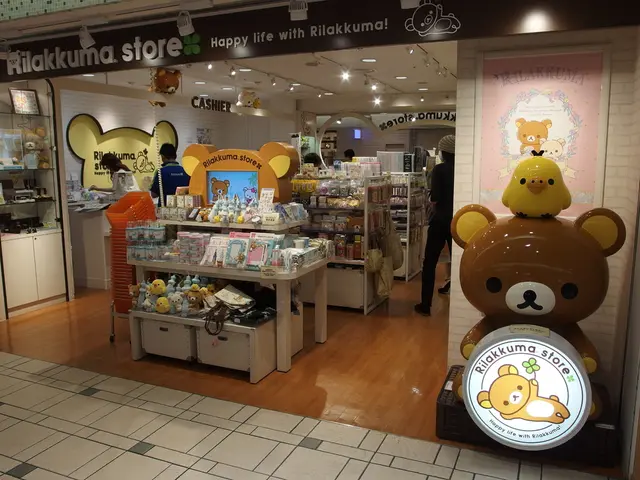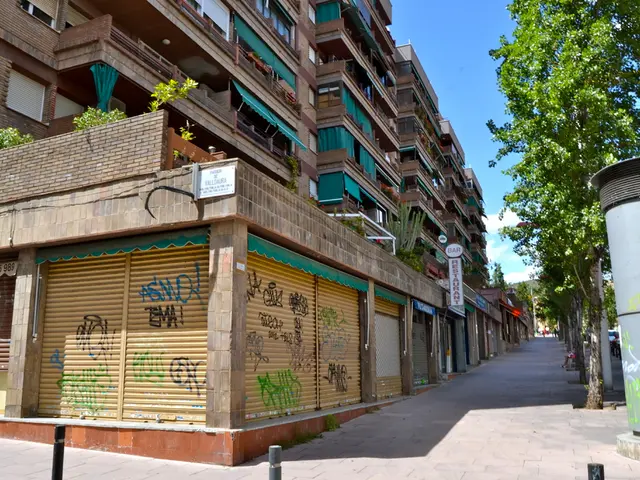Emerging Patterns in Eco-friendly High-end Aesthetics and Green Residential Interior Design for the Year 2025
In the world of interior design, sustainability and luxury are no longer mutually exclusive concepts. The shift towards sustainable luxury has seen a rise in eco-friendly materials, timeless aesthetics, and multifunctional pieces that cater to both style and environmental responsibility.
One prime example of this trend is the Baboolal residence in North Carolina, which embodies the Japanese concept of Shakkei or "borrowed landscape." Large glass doors frame views of a nearby meadow, seamlessly blending natural beauty with sustainable luxury and reinforcing the home's connection to carbon-neutral living. The airtight, well-insulated structure, equipped with passive design strategies, reflects a global trend toward luxurious yet low-impact living.
The Baboolal residence is not alone in its eco-conscious endeavours. Sustainable luxury design has found its way into furniture and home interiors, with brands like Avocado, Longchamp, and Aifunghi leading the charge.
Avocado Furniture, known for its 100% reclaimed and FSC-certified wood products, offers a range of sustainable furniture pieces, including mattresses and bed frames. Their products are handmade in California and are GREENGUARD Gold certified for low chemical emissions.
Longchamp's furniture collection features timeless designs with flowing forms, blending traditional woodworking techniques with modern aesthetics. The pieces, made from wood sourced from local French sawmills, emphasize responsible luxury.
Aifunghi's Mycelium Chairs, produced from a sustainable, biodegradable material, demonstrate that sustainable furniture can be both beautiful and produced on a semi-industrial scale.
Multifunctional furniture, pieces that serve multiple purposes, are gaining popularity, allowing homeowners to optimize space without sacrificing style. This includes bedframes that can be repurposed as stools or storage towers.
The use of eco-friendly materials like reclaimed wood, bamboo, recycled metals, and natural materials like rattan is becoming more prevalent. These materials not only reduce waste but also add a natural ambiance to spaces.
Sustainable luxury design prioritizes classic, long-lasting pieces over fleeting trends, reducing the need for frequent renovations and minimizing environmental impact. The shift towards foam-free furnishings, such as sofas made with beans or latex, highlights the growing awareness of the environmental impact of traditional materials.
Sustainable luxury design also places strong emphasis on ethical sourcing and supports artisans who follow environmentally responsible production practices. It integrates smart home technologies and energy-efficient appliances to optimize energy consumption and lower utility costs.
Herman Miller, a renowned name in design, has introduced a sustainable twist to the iconic Eames Lounge Chair and Ottoman with a new bamboo-based leather alternative. The Nayan Eyelid Multifunctional Lamp redefines ethical craftsmanship by blending sculptural design with cultural storytelling and supporting mindful, low-waste lifestyle.
In conclusion, sustainable luxury redefines luxury to include ethical sourcing, eco-conscious innovation, and mindful craftsmanship. As humans shift towards greater responsibility and sustainability in their way of thinking, living, and designing homes, we can look forward to a future where luxury and sustainability go hand in hand.
- The Baboolal residence in North Carolina embraces sustainable luxury with its blend of natural beauty and carbon-neutral living, showcasing a global trend towards low-impact living.
- Sustainable luxury design is not limited to interior design alone; brands like Avocado, Longchamp, and Aifunghi are leading the charge in furniture and home interiors.
- Avocado Furniture offers GREENGUARD Gold certified sustainable furniture, using 100% reclaimed and FSC-certified wood, highlighting the beauty of long-lasting, eco-friendly pieces.
- Longchamp's furniture collection features pieces crafted from wood sourced from local French sawmills, showcasing a harmonious blend of traditional techniques and modern aesthetics for responsible luxury.
- Aifunghi's Mycelium Chairs, produced from a sustainable, biodegradable material, demonstrate that sustainable furniture can be both beautiful and produced on a semi-industrial scale.
- As sustainable luxury continues to evolve, multifunctional furniture, using eco-friendly materials like reclaimed wood, bamboo, and rattan, is becoming popular, allowing homeowners to optimize space without sacrificing style or the environment.




